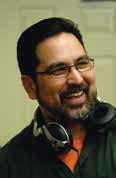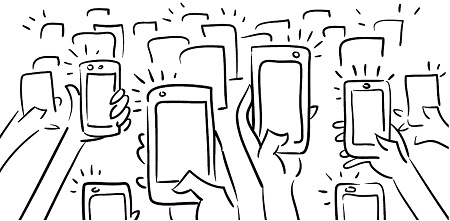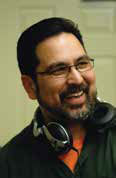I’m a serious music fan, and I like to say, “I like all kinds of music,” but I have a problem. The festivals I’ve attended in the last few years have increasingly featured a music style that I couldn’t understand—electronic dance music or EDM. This music is often generated with a minimal amount of physical equipment that sits static on a table on stage while a single person stands behind it wiggling like one of those inflatable tube guys in front of the used car dealership.

I got some help understanding EDM recently at a marketing presentation where it was explained that what people buy reflects who they are —or more importantly—who they want to be. It finally struck me that EDM is more about the people experiencing the music than the person creating it. People at an EDM concert want an enveloping aural and visual experience in which to be seen. It isn’t about idolizing the guy or girl playing the guitar on stage like in traditional rock music. EDM is a platform for an experience that includes fans as an integral part of the spectacle.
Architecture is beginning to reflect this trend too. Similar to monarchical cultures where theaters and other spaces were designed to highlight where the king and queen were seated during the performance, many contemporary performance spaces are now designed to mix the performer and the audience where everyone can be king or queen. These spaces encourage the use of social media, so everyone can experience a dose of their everyday internet fame. The floors of these spaces are often flat to erase the lines between audience and stage. Multi-channel spatial sound systems without a definitive point-of-origin are often used, and the lighting features the audience as much as the stage, if there is a stage at all. These experiential “performance spaces,” such as Brooklyn’s National Sawdust (featured in this issue of SCN) share more with clubs than concert halls and offer plenty of opportunity for selfies, if not self-expression. These new spaces are in great contrast to traditional venues where pulling out your phone to post on Instagram is forbidden.

Customer-centered experience, such as these, may also extend to the modern workplace where contemporary designs allow everyone’s ideas to be visible—not just those of the boss. The walls of the cubicle are lower or non-existent because we want to be seen and participate in what is going on. We all want to feel that we can equally contribute to the business. Modern workspaces, like contemporary performance spaces, should be flexible shells where infrastructure supports installing anything that is needed to envelop participants in sound and image. Displays and lighting should be personalized and as flexible. Creative LED lights could vary by zone to indicate the projects that are taking place in each work area. Sound could have more flexible zoning, so workers can play masking noise or music—maybe based on data-mined information about employees. The good news is that this type of space is relatively inexpensive and easy to build. Displays, LED lighting, and high-efficiency audio amplifiers don’t require the extreme amounts of power that they did in the past. Collaboration technology exists today to support flexible display boundaries and virtual workspaces.
Popular culture is in the process of blowing up the stage, the podium, and the corner office to allow for spaces where everyone can share and showcase their ideas and identities. Every space that we experience, whether it is at work or at a concert, should support a selfie—because a selfie is our way of displaying who we are, what we do, and how we do it. How can your next design be a selfie-friendly space?
Paul Chavez (pchavez@harman.com) is the director of systems applications for Harman Pro Group. He is a usability evangelist and a futurologist. Chavez has designed a variety of audiovisual systems ranging from themed attractions to super yachts. He has also taught and written on the topics of interaction design, audiovisual design, and networking.
Self Expression
Do the information environments that you are designing allow the users to reflect who they are? Here are some ways that these spaces might work in the future:
● Can the inhabitants of a work place make alterations to their own space? Some of the plainest spaces have been shells for some of the most creative teams because they have had the ability to make significant modifications to their workspace that reflect themselves and the projects on which they are working. Often these spaces are older spaces. Is the space you are designing so constrained that it can never reflect the people who will use it?
● Design a lighting system that can vary by day or week using creative LED fixtures. Lighting can change a space and changes can re-ignite interest in old spaces. Allow users to make adjustments to their lighting zone with an app.
● Ubiquitous video displays must be paired with simple connectivity (ideally wireless) and flexible routing to allow multiple people to move multiple shared screens around the space, including the ability to swap screens. Every screen should be part of the overall video environment.
● Can people adjust sound and music in their workspace? Traditionally the AV industry stayed out of the open plan workspaces (except for maybe sound masking systems). Are there new opportunities to highly-zoned sound systems that are controlled with PCs or mobile devices? How will big data and steerable sound enable these types of systems in the future?
● One form of self-expression that still exists in most offices is the ubiquitous whiteboard. How can you embed “whiteboarding” capability throughout a space? Whether it be electronic whiteboards or simply walls coated with dry erase paint like Ideapaint (http://www.ideapaint.com/), we should leverage these tools for collaboration and even provide seminars on how best to express ideas in the drawn form.
